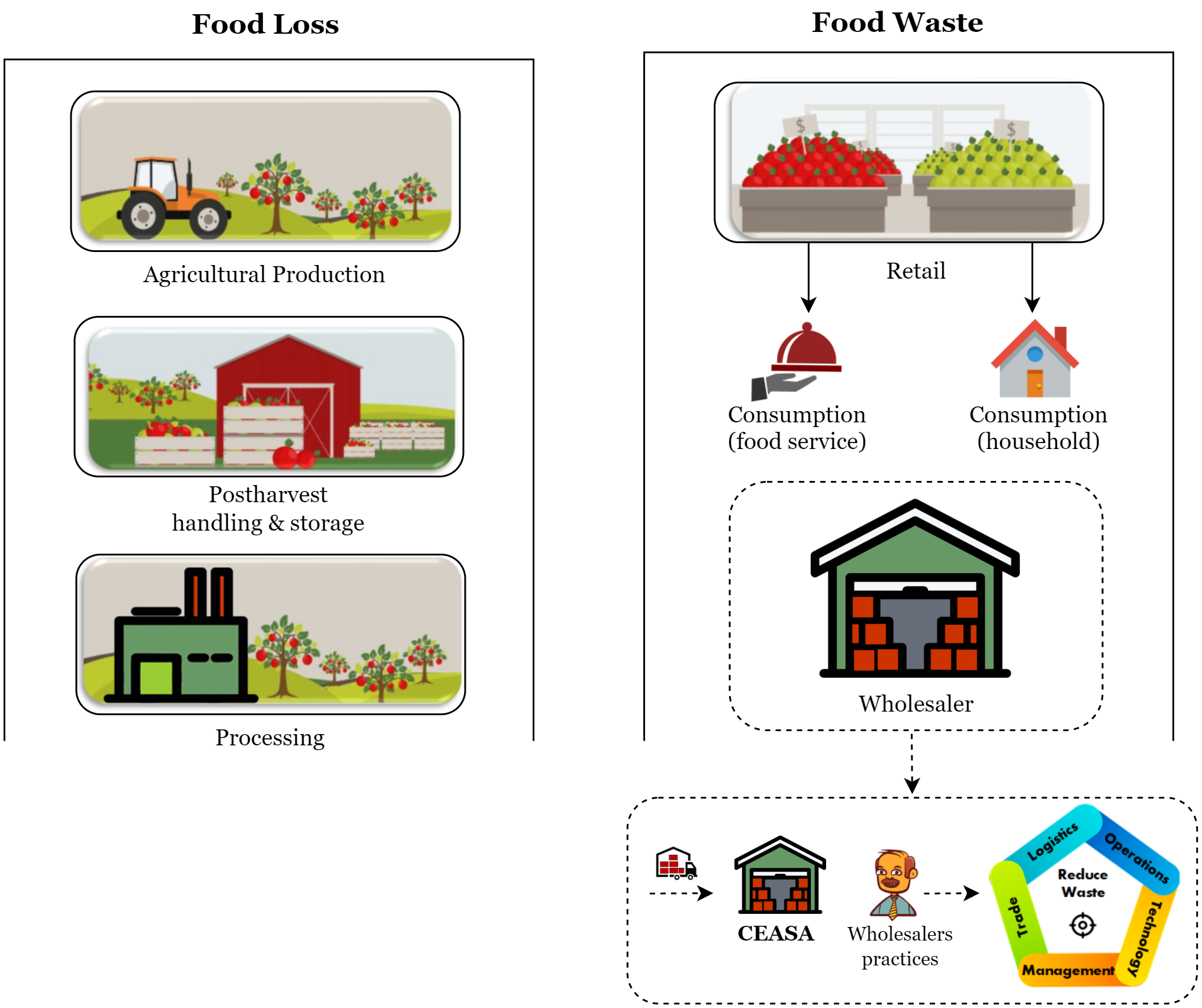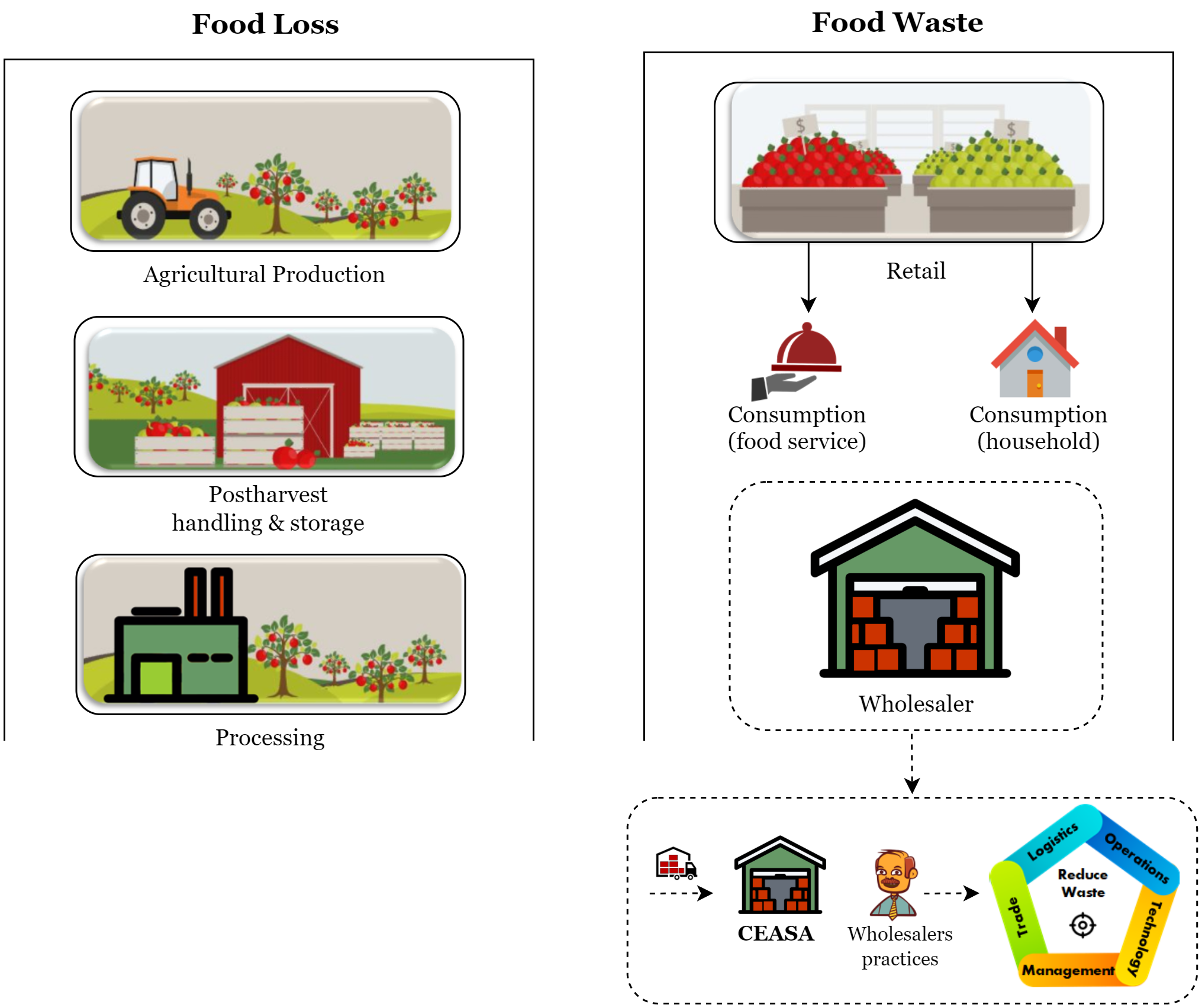Waste assessment in distribution and marketing logistics of horticultural products: evidence from Brazil
DOI:
https://doi.org/10.48162/rev.39.020Palabras clave:
desperdicio de alimentos, gestión de la cadena de suministro, minimización de desperdicios, comercialización sostenible, excedente de frutas, prevención de desperdiciosResumen

Worldwide, one-third of the food produced is inconsumable due to marketable quality losses. Parallelly, and given the growing world population, levels of waste have become unacceptable. Supply channels play a fundamental role in establishing strategies for food waste mitigation. The objective of this research was to analyze if good operational practices with different dimensions of distribution and commercialization logistics may contribute to reduce fruit and vegetable waste. The studied dimensions were: logistics, operations, technology, trade and management. Several questionnaires were administered to 83 specialized wholesale merchants from a large supply center in Brazil, for lettuce, potato, orange, papaya and tomato. The results indicated that for papaya and potato, low and high waste generation are associated with a greater number of anti-waste actions (p = 0.0071 and p = 0.0469 respectively). For tomato, lettuce and orange, no significant differences for found. These results represent a first approach to understanding the reasons for food waste at wholesale centers.
Highlights:
- Worldwide, one-third of the food produced is inconsumable due to marketable quality losses. In Brazil, about 40 thousand tons of food is wasted per year.
- Food waste in the fruit and vegetable supply chain is associated with the following dimensions: logistics, operation, technology, trade and management.
- For papaya and potatoes, low levels of residues are associated with a greater number of anti-waste actions such use of a cold chamber and use of promotional pricing, respectively.
- For tomato, lettuce and orange, no significant differences was found for high and low levels of waste in relation to the number of actions undertaken in these chains.

Descargas
Publicado
Número
Sección
Licencia

Esta obra está bajo una licencia internacional Creative Commons Reconocimiento-NoComercial-CompartirIgual 3.0.
Aquellos autores/as que tengan publicaciones con esta revista, aceptan las Políticas Editoriales.



